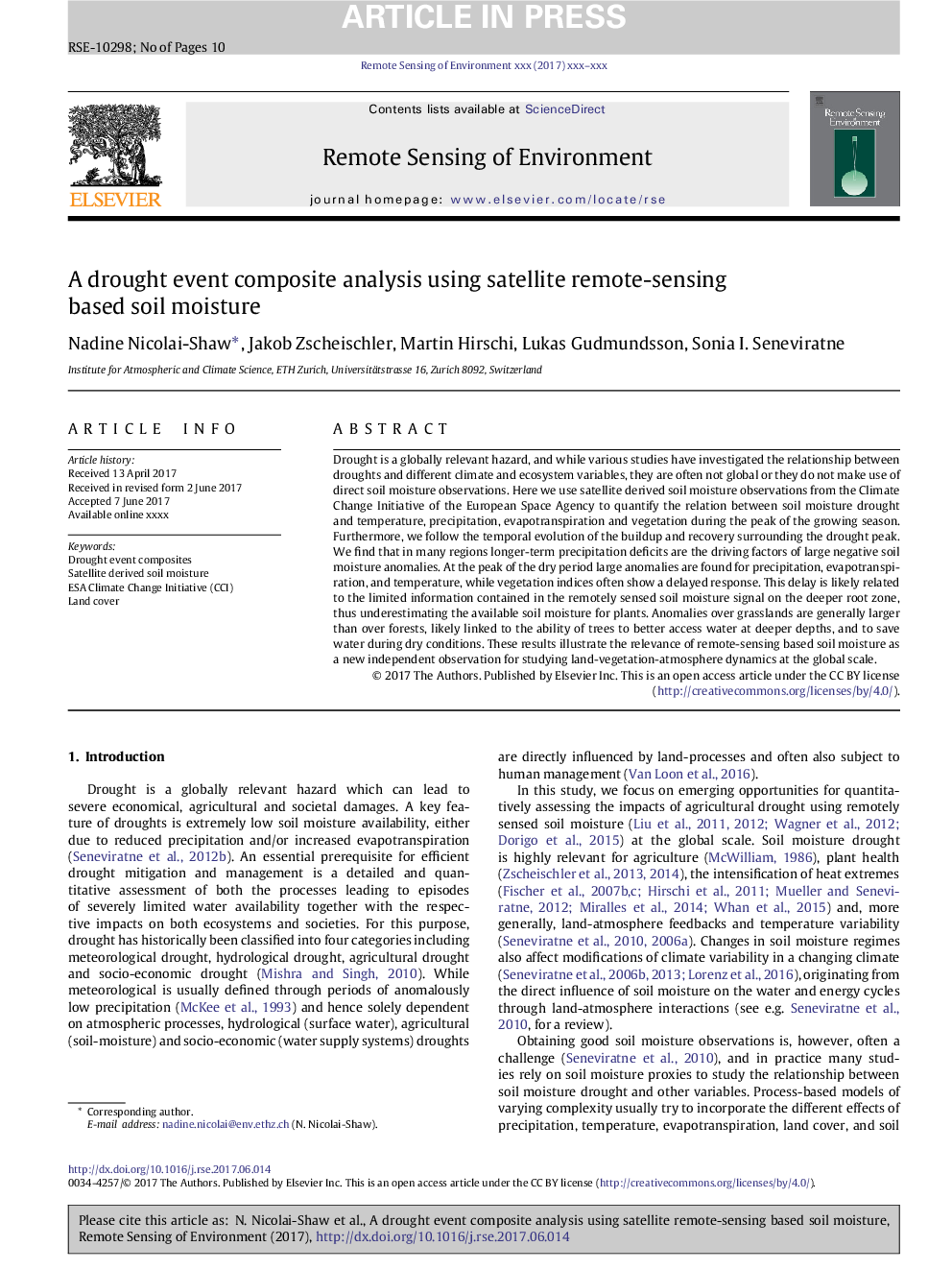| Article ID | Journal | Published Year | Pages | File Type |
|---|---|---|---|---|
| 8866945 | Remote Sensing of Environment | 2017 | 10 Pages |
Abstract
Drought is a globally relevant hazard, and while various studies have investigated the relationship between droughts and different climate and ecosystem variables, they are often not global or they do not make use of direct soil moisture observations. Here we use satellite derived soil moisture observations from the Climate Change Initiative of the European Space Agency to quantify the relation between soil moisture drought and temperature, precipitation, evapotranspiration and vegetation during the peak of the growing season. Furthermore, we follow the temporal evolution of the buildup and recovery surrounding the drought peak. We find that in many regions longer-term precipitation deficits are the driving factors of large negative soil moisture anomalies. At the peak of the dry period large anomalies are found for precipitation, evapotranspiration, and temperature, while vegetation indices often show a delayed response. This delay is likely related to the limited information contained in the remotely sensed soil moisture signal on the deeper root zone, thus underestimating the available soil moisture for plants. Anomalies over grasslands are generally larger than over forests, likely linked to the ability of trees to better access water at deeper depths, and to save water during dry conditions. These results illustrate the relevance of remote-sensing based soil moisture as a new independent observation for studying land-vegetation-atmosphere dynamics at the global scale.
Keywords
Related Topics
Physical Sciences and Engineering
Earth and Planetary Sciences
Computers in Earth Sciences
Authors
Nadine Nicolai-Shaw, Jakob Zscheischler, Martin Hirschi, Lukas Gudmundsson, Sonia I. Seneviratne,
